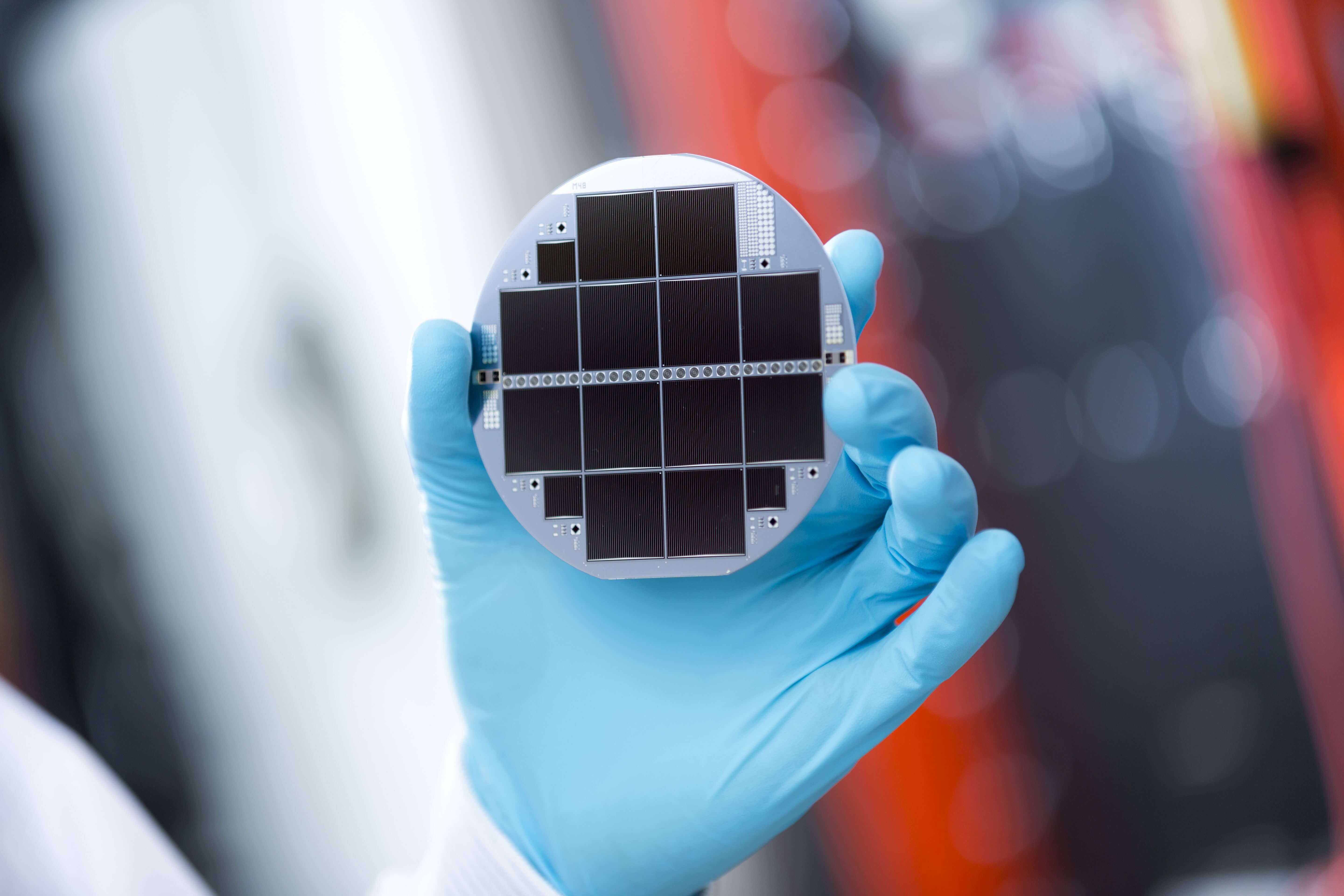Three Student Awards for Fraunhofer ISE at the 47th IEEE PVSC
The Fraunhofer Institute for Solar Energy Systems ISE won three student awards at the 47th IEEE Photovoltaic Specialists Conference (IEEE PVSC). Yet another award was given to a highly efficient solar cell. This year, the world's oldest photovoltaic conference will be held in virtual form from June 15 to August 21.

Fraunhofer ISE junior scientist Markus Feifel received the Student Award in the category of Hybrid Tandem Solar Cells for a III-V solar cell grown directly on silicon, which achieved a new world record efficiency of 25.9 percent. Tandem solar cells of different III-V semiconductors (elements from the main groups III to V of the periodic table of the elements) as well as silicon use different wavelength fractions of sunlight for power generation. This combination of materials has so far been used in space and in concentrator photovoltaics and is pivotal for next-generation solar cells with higher efficiencies. The GaInP/GaAs/Si solar cell presented by Markus Feifel was processed in a simplified manufacturing process in which the III-V layers are applied directly to a silicon solar cell in an epitaxial process. This is intended to reduce future manufacturing costs and make III-V/Si tandem solar cells commercially competitive.
Another Student Award went to Fraunhofer ISE's Felix Predan for his presentation "Wafer-bonded GaInP/GaAs/GaInAs/GaSb four-junction solar cells with 43.8% efficiency under concentration".
Furthermore, the Best Student Paper Award was presented to Sang Hyuk Lee, a master student from Korea Polytecnic University and guest researcher at Fraunhofer ISE on a scholarship from the South Korean government. His paper "Learning from Tetris: A New Approach for the Automated Configuration of the Interconnection Layout of BIPV Modules for Large-Scale Application" discusses the optimum interconnection of BIPV modules. These modules are traditionally arranged in rows or columns, which often leads to a loss of performance due to uneven irradiation conditions within a module string. This is especially true for facades, where a variety of shading levels and influences are a common feature. Among other methods, Sang Hyuk's approach uses algorithms similar to those used in the game Tetris to connect the modules in such a way that the irradiation conditions within a module string are as uniform as possible. This ensures that thehighest power output possible at that time is achieved. The resulting interconnection led to higher annual power yields than those of the geometrically simpler interconnections. In part the solution found was even close to the theoretical maximum at which each module would be operated at its maximum power point at all times.
In the "Battle Royale", in which traditionally the best perovskite silicon tandem cells compete against tandem cells made from III-V semiconductors, the GaInP/AlGaAs/Si cell from Fraunhofer ISE came out on top with an efficiency of 34.1 percent. The solar cell also holds the current world record in this category.
However, the competing perovskite/Si tandem cells also achieved 29.1%.
Last modified: